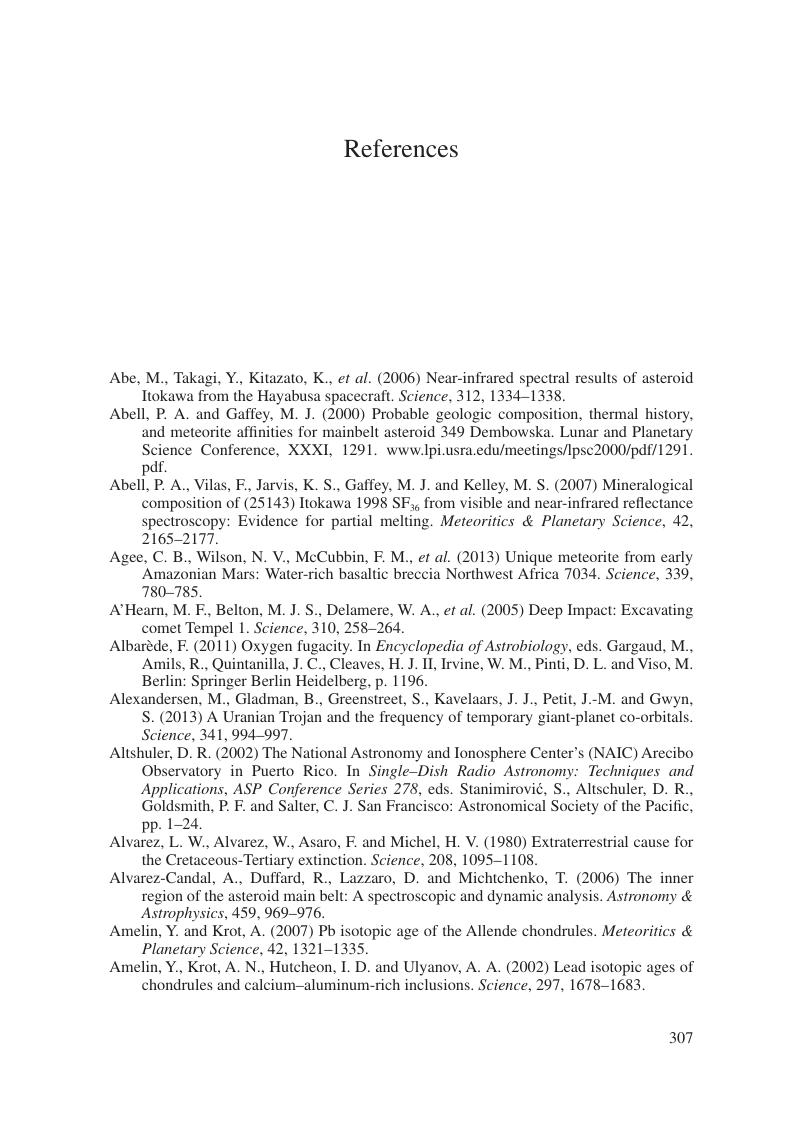Book contents
- AsteroidsAstronomical and Geological Bodies
- Cambridge Planetary Science
- Asteroids
- Copyright page
- Dedication
- Contents
- Preface
- Acknowledgments
- Variables, Constants, and Unit Abbreviations
- 1 Light and Magnitude
- 2 Orbits and Discovering Minor Planets
- 3 Meteorites, Minerals, and Isotopes
- 4 Reflectance Spectroscopy and Asteroid Taxonomy
- 5 Physical Properties and Families
- 6 Comets and Outer Solar System Bodies
- 7 Near-Earth Asteroids and the Impact Threat
- 8 Spacecraft Missions
- References
- Index
- References
References
Published online by Cambridge University Press: 01 February 2017
- AsteroidsAstronomical and Geological Bodies
- Cambridge Planetary Science
- Asteroids
- Copyright page
- Dedication
- Contents
- Preface
- Acknowledgments
- Variables, Constants, and Unit Abbreviations
- 1 Light and Magnitude
- 2 Orbits and Discovering Minor Planets
- 3 Meteorites, Minerals, and Isotopes
- 4 Reflectance Spectroscopy and Asteroid Taxonomy
- 5 Physical Properties and Families
- 6 Comets and Outer Solar System Bodies
- 7 Near-Earth Asteroids and the Impact Threat
- 8 Spacecraft Missions
- References
- Index
- References
Summary

- Type
- Chapter
- Information
- AsteroidsAstronomical and Geological Bodies, pp. 307 - 355Publisher: Cambridge University PressPrint publication year: 2016

